Resource Library
Our Lending Library is offered as a free resource to parents and caregivers of children currently enrolled in Husky House. Our guidelines are that books may be borrowed for a one month period and two books may be checked out by a family at a time. If you are looking for a specific topic or recommendation, please contact us. We are happy to help!
Books should be returned to the Husky House administration. If you have any books to donate or share, please let us know. We are always looking to expand our offerings for families.
book descriptions come from publisher and author pages
Books should be returned to the Husky House administration. If you have any books to donate or share, please let us know. We are always looking to expand our offerings for families.
book descriptions come from publisher and author pages
Activities for children and families

As hard as it may be for some adults to believe, millions of children are now growing up without even knowing how to play hopscotch or the slightest idea how to shoot marbles. Television and video games have interdicted the centuries-old traditions of passing familiar games from parent to child. Fewer and fewer parents have time or patience for that most important bond between parent and child - PLAY. In All Join Hands, Heidi Hartwiger.seeks not only to preserve traditional games once known to all, she also encourages parents to celebrate the joys of playing with their children and offers suggestions and directions for scores of fun things that grownups and children can do together.
In a time when many busy parents have surrendered their children's free time to TV and video games, this guide offers suggestions and full instructions for hundreds of creative and fun activites that parents and children can do together, both inside and outside. Things such as leaf printing, mud art, paper folding, string play, potato carving, puppet making, and old-time games that have been handed down for generations.
In a time when many busy parents have surrendered their children's free time to TV and video games, this guide offers suggestions and full instructions for hundreds of creative and fun activites that parents and children can do together, both inside and outside. Things such as leaf printing, mud art, paper folding, string play, potato carving, puppet making, and old-time games that have been handed down for generations.

Be your child's hero - a super spy who can write in secret code; a scientist who knows how to snap optical illusion photographs; a masterchef who can make maple ice candy; and more. Cool Parent 101 includes dozens of awesome projects that any parent and child can accomplish together!

Fifty Dangerous Things (you should let your children do) is the first book from the people who created Tinkering School. With projects, activities, experiences, and skills ranging from “Superglue Your Fingers Together” to “Play with Fire,” along with 48 other great ideas, the book is a manifesto for kids and parents alike to reclaim childhood. Easy to follow instructions, fun facts, and challenging undertakings that will engage and inspire whole households.
Why Fifty Dangerous Things? First off, Five Dangerous Things just weren’t enough (although the audience at TED thought it was a good starting point). More importantly, there are many “dangerous” things that are interesting, eye-opening, enlightening or just plain fun! And while there are aspects of danger in virtually everything we do, the trick is to learn how mastery actually minimizes danger. Most of us learn how to walk without toppling over at a very young age, so that walking is no longer dangerous. Next we learn to negotiate stairs. Why stop there? Why not practice and become proficient at walking on the roof or walking on a tightrope? These are just a few of the Fifty Dangerous Things that we invite you to try.
Why Fifty Dangerous Things? First off, Five Dangerous Things just weren’t enough (although the audience at TED thought it was a good starting point). More importantly, there are many “dangerous” things that are interesting, eye-opening, enlightening or just plain fun! And while there are aspects of danger in virtually everything we do, the trick is to learn how mastery actually minimizes danger. Most of us learn how to walk without toppling over at a very young age, so that walking is no longer dangerous. Next we learn to negotiate stairs. Why stop there? Why not practice and become proficient at walking on the roof or walking on a tightrope? These are just a few of the Fifty Dangerous Things that we invite you to try.
|
In today's world, it's easy to think good manners and proper etiquette are relics of a simpler time. They're not. Proper behavior is as important today as it ever was. Those who know the correct way to act in social situations are empowered by their knowledge and respected by others.
Getting Ahead with Etiquette, Family Edition is a comprehensive guidebook to modern manners. Etiquette expert Tina Hayes provides the life skills needed by adults and children across a range of social situations, from at-home events to dining out. Hayes's wide-reaching guide covers such important considerations as proper sportsmanship, manners while traveling, shopping etiquette, table manners, hiking, and camping. You'll discover the correct way to act as both host and guest, as well as proper etiquette for major holidays and traditional celebrations. Interactive questions and answers at the end of each chapter help you remember important etiquette points. Knowing how to properly behave in any given situation builds self-confidence in people of all ages while helping you treat others with respect and consideration. Etiquette isn't dead-it's experiencing a thriving resurgence. |

This book describes more than 350 amusement parks, beaches, boardwalks, train rides, wildlife areas, zoos, ghost towns, museums, and family restaurants especially selected to entertain and delight the whole family.

Parents of kids ages 6 to 12 need look no further for a thorough, hands-on way to organize their children's time. Looks at the ways children can spend their afternoons, weekends, and vacations, describes how children develop between the ages of six and twelve, and tells how parents can develop their children's special interests

A guide for concerned parents and teachers - one that describes and explains the issues, tells you how to adapt your explanation to children of different ages, offers ways you as an adult can help, and most importantly, presents dozens of fun, creative, and original learning activities.

a vacation guide to Northern California with suggestions of where to stay, where to eat, and what to do.
Autonomy Support & behavior guidance

From early childhood to adolescence, common misbehaviors emerge as a primary concern of both parents and educators. In Discipline Without Tears, Dr. Rudolf Dreikurs provides a clear, constructive outline of his proven strategies for dealing with a wide range of childhood misbehaviors. Believing that children are social beings who want to belong, Dreikurs stresses encouragement, cooperation, and firm control in a democratic alliance of parents, teachers, and children. This sound and sensible guide offers surefire techniques and time-tested advice, especially designed for those who need to deal with large groups of children or with children in a classroom setting. Full of concrete examples and written in a warm, understanding tone, "Discipline Without Tears" enables parents and teachers to help children change for the better.

With warmth and empathy, Clare Cherry makes a strong argument for non-punitive discipline. Through interviews and surveys of parents and children, she establishes a list of the the most common fears and worrisome discipline problems. The author's practical suggestions for reducing conflict and tension offer encouragement to all parents.

As professional childcare providers, we want to create an environment that is inviting and nurturing for children as well as encouraging for our adult staff. We want to find ways to form a partnership with parents in their children's development. Simply put, we want to provide an all-around quality childcare experience at every level. This book is also great for parents who want to take an active role in assuring the best childcare for their children.
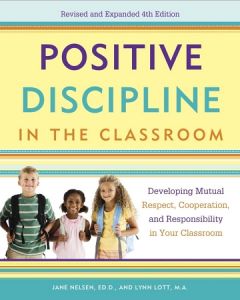
Over the years millions of parents and teachers have used the strategies of Positive Discipline to restore order and civility to their classrooms and homes. And in today's classroom, where teachers must compete with digital distractions for their students' attention while trying to satisfy increasingly demanding academic standards, it is more important than ever that educators be able to combat apathy, instill vital problem-solving skills, and create a climate that maximizes learning.

In The Self-Driven Child, authors William Stixrud and Ned Johnson focus on the ways that children today are being denied a sense of controlling their own lives—doing what they find meaningful, and succeeding or failing on their own. Screen time, the authors say, is part of the problem, but so are well-meaning parents and schools, who are unwittingly taking from children the opportunities they need to grow stronger, more confident and more themselves.

SOS Help for Parents is a book and parent education program which helps children ages two to twelve , improve their behavior and emotional adjustment. The SOS book helps teach over 20 basic methods and techniques for helping children. The best methods for handling over 46 different behavior problems are taught.
Boys
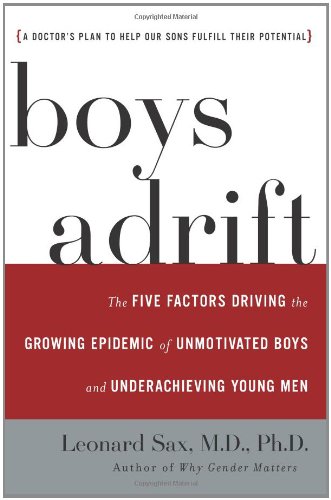
Dr. Leonard Sax draws on his clinical experience to explain why young men are failing in school and disengaged at home. He shows how we have created an environment that is toxic to boys and shares practical advice on homework, video games, medication and more.
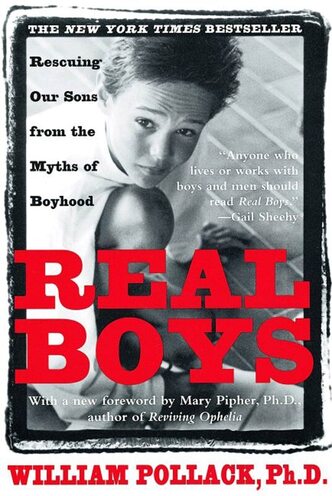
Based on William Pollack's groundbreaking research at Harvard Medical School for more than two decades, Real Boys explores this generation's "silent crisis": why so many boys are sad, lonely, and confused although they may appear tough, cheerful, and confident. Pollock challenges conventional expectations about manhood and masculinity that encourage parents to treat boys as little men, raising them through a toughening process that drives their true emotions underground. Only when we understand what boys are really experiencing, says Pollock, can parents and teachers help them develop more self-confidence and the emotional savvy they need to deal with challenging issues.
Child Development
|
The original and vastly influential ideas of Erik H. Erikson underlie much of our understanding of human development. His insights into the interdependence of the individuals' growth and historical change, his now-famous concepts of identity, growth, and the life cycle, have changed the way we perceive ourselves and society. Widely read and cited, his works have won numerous awards including the Pulitzer Prize and the National Book Award.
|

This warm and reassuring reference helps parents to understand their children’s actions better, giving them the guidance necessary to discipline lovingly and effectively, all while fostering a healthy environment in which children will grow and develop into successful teenagers and adults. This book represents a lifetime of experience with children - their problems, their delights, their challenges - observed by one of America's foremost psychiatrists.
|
Howard Gardner's brilliant conception of individual competence changed the face of education today. In the years since the publication of his seminal Frames of Mind, thousands of educators, parents, and researchers have explored the practical implications of Multiple Intelligences (MI) theory -- the powerful notion that there are separate human capacities, ranging from musical intelligence to the intelligence involved in understanding oneself. This reader brings together work by Howard Gardner and his colleagues at Project Zero (Harvard Graduate School of Education) to provide a coherent picture of what has been learned about the educational applications of multiple intelligences theory from school projects and formal research over the past decade.
|

This best-selling resource provides clear, straightforward introductions to the foundational theories of John Dewey, Maria Montessori, Erik Erikson, Jean Piaget, and Lev Vygotsky. Each chapter highlights a theorist's work and includes insight on how the theory impacts teaching young children today. Discussion questions and suggested readings are included to help you gain an understanding of what it means to apply each theory to your work with children.

Despite the development of modern educational theories and the ingenious methods devised to hold a child’s attention today, education – and even childhood – appear to be facing something of a crisis. The fact that boredom – or even extreme violence – can be spoken of in connection with little children is a sad reflection on our times. Are children in danger of losing the natural human fantasy that is the source of all creative imagination in later life? Are we in danger indeed of losing childhood altogether? Although first published in 1940, Cecil Harwood’s little book has become a classic introduction to the perennial themes of child development and growth, and to the basic principles of Rudolf Steiner/Waldorf education.
Cecil Harwood (1898 – 1975) was one of the founding members of the first Waldorf school in the English-speaking world, and worked for many years as a Steiner teacher. His sensitive awareness and respect for the innate wisdom of childhood shine through this book. As he demonstrates, a sympathetic and loving picture of this natural childhood wisdom is a prerequisite of any good educational endeavour.
Cecil Harwood (1898 – 1975) was one of the founding members of the first Waldorf school in the English-speaking world, and worked for many years as a Steiner teacher. His sensitive awareness and respect for the innate wisdom of childhood shine through this book. As he demonstrates, a sympathetic and loving picture of this natural childhood wisdom is a prerequisite of any good educational endeavour.
|
In this pioneering, practical book, Daniel J. Siegel, neuropsychiatrist and author of the bestselling book Mindsight, and parenting expert Tina Payne Bryson demystify the meltdowns and aggravation, explaining the new science of how a child’s brain is wired and how it matures. The “upstairs brain,” which makes decisions and balances emotions, is under construction until the mid-twenties. And especially in young children, the right brain and its emotions tend to rule over the logic of the left brain. No wonder kids can seem-and feel-so out of control. By applying these discoveries to everyday parenting, you can turn any outburst, argument, or fear into a chance to integrate your child’s brain and foster vital growth. Raise calmer, happier children using twelve key strategies.
|
Communication

Discover your child's primary language—then speak it—and you will be well on your way to a stronger relationship with your flourishing child. Each child, like an adult, expresses and receives love best through on of five different communication styles. This can work against parents who speak different love languages that their children. however, when properly prepared, adults can use this information to help them meet their children's deepest emotional needs.

This book shows how important it is, in family talk, to learn to separate word meanings, or messages, from heart meanings, or metamessages - unstated but powerful meanings that come from the history of our relationships and the way things are said. Presenting real conversations from real people's lives, this book uncovers what is actually going on in family talk, showing how family conversations must balance the longing for connection with the desire for control, as we struggle to be close without giving up our freedom. By helping readers to understand and redefine family talk, Tannen provides tools to improve relationships with family members of every age.

Marshall Rosenberg developed Nonviolent Communication in the 1960s as a tool to implement the desegregation of schools in the United States. He was motivated to help people connect with their own humanity and that of others respectfully, compassionately, peacefully and with joy.
Contemporary Concerns

Take a good look around you: you can't go into stores or restaurants without seeing joyless children screaming, sulking, resisting their parents, or pulling things off shelves. Parents in turn nag, complain, and often try desperately to ignore their unruly, surly offspring. According to esteemed child psychiatrist Robert Shaw, this epidemic has become so much the norm that we often don't recognize its warning signs. This bold and timely book tells you how to save your child and your family—with a commonsense approach that cuts to the core of the problem and shows us the cure.

In Glow Kids, Dr. Nicholas Kardaras examines how technology—more specifically, age-inappropriate screen tech, with all of its glowing ubiquity—has profoundly affected the brains of an entire generation. Brain imaging research is showing that stimulating glowing screens are as dopaminergic (dopamine activating) to the brain’s pleasure center as sex. And a growing mountain of clinical research correlates screen tech with disorders like ADHD, addiction, anxiety, depression, increased aggression, and even psychosis. Most shocking of all, recent brain imaging studies conclusively show that excessive screen exposure can neurologically damage a young person’s developing brain in the same way that cocaine addiction can.

In this influential work about the staggering divide between children and the outdoors, child advocacy expert Richard Louv directly links the lack of nature in the lives of today’s wired generation—he calls it nature-deficit—to some of the most disturbing childhood trends, such as the rises in obesity, attention disorders, and depression.
Last Child in the Woods is the first book to bring together a new and growing body of research indicating that direct exposure to nature is essential for healthy childhood development and for the physical and emotional health of children and adults. More than just raising an alarm, Louv offers practical solutions and simple ways to heal the broken bond—and many are right in our own backyard.
Last Child in the Woods is the first book to bring together a new and growing body of research indicating that direct exposure to nature is essential for healthy childhood development and for the physical and emotional health of children and adults. More than just raising an alarm, Louv offers practical solutions and simple ways to heal the broken bond—and many are right in our own backyard.

Many believe that America's children are exposed to negative messages by the media--violence, irresponsible sex, and materialism--making it difficult for parents to teach traditional values. Noting that what motivates parents is the desire to teach their children right from wrong while what motivates society is financial profit, this book explores the dichotomy between private and societal values and urges parents to counteract the negative effects of a profit-driven society.

Judith Warner tackles a subject that’s just as contentious and important: Are parents and physicians too quick to prescribe medication to control our children’s behavior? Are we using drugs to excuse inept parents who can’t raise their children properly?
What Warner discovered from the extensive research and interviewing she did for this book is that passion on both sides of the issue “is ideological and only tangentially about real children,” and she cuts through the jargon and hysteria to delve into a topic that for millions of parents involves one of the most important decisions they’ll ever make for their child.
What Warner discovered from the extensive research and interviewing she did for this book is that passion on both sides of the issue “is ideological and only tangentially about real children,” and she cuts through the jargon and hysteria to delve into a topic that for millions of parents involves one of the most important decisions they’ll ever make for their child.
Emotional Development

Babies, toddlers, children, teenagers, parents and grandparents all have the same emotional needs. Meeting these needs in childhood provides the foundation for success in school, work, relationships, marriage, and life in general. How to Raise Emotionally Healthy Children, a parenting book by Gerald Newmark, PhD, has a compelling and provocative message about parent-child relations. It provides powerful and practical concepts and tools that enable parents, teachers, and childcare providers to interact with children and with each other in emotionally healthy ways. In the process, children learn to interact with each other in the same way.

Living in a culture saturated with media messages focused on fame, wealth, and beauty, it’s easy for today’s youth to rely on these external messages for guidance. As parents and role models, our natural instinct is to protect and shield our youth from these negative messages and attitudes. Unfortunately, this mode of thinking has encouraged the growing epidemic of youth helplessness. In Raising Everyday Heroes, award-winning author Dr. Elisa Medhus tackles this growing social phenomenon and inspires parents to raise tomorrow’s everyday heroes.

As responsible parents, we want to find ways to help our children deal with the stress and strains of childhood, to understand and cope with powerful emotions. Fear is one such emotion. It is common in children, and though fear can be healthy and protective, it can also be paralyzing. It can keep a child from experiencing the fullness of life.
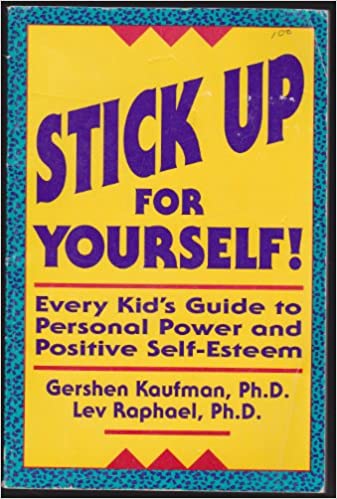
Using simple words and real-life examples, this book shows kids how to be assertive with other kids—and with adults. Kids will learn to feel better about themselves, stronger and more secure inside, and more in charge of their lives. They’ll read about effective ways to deal with intense feelings and to build self-esteem and self-confidence. In addition, they’ll learn strategies for building inner security to cope with powerlessness and uncertainty

When facing challenges, unpleasant tasks, and contentious issues such as homework, screen time, food choices, and bedtime, children often act out or shut down, responding with reactivity instead of receptivity. This is what New York Times bestselling authors Daniel J. Siegel and Tina Payne Bryson call a No Brain response. But our kids can be taught to approach life with openness and curiosity. Parents can foster their children’s ability to say yes to the world and welcome all that life has to offer, even during difficult times. This is what it means to cultivate a Yes Brain.
When kids work from a Yes Brain, they’re more willing to take chances and explore. They’re more curious and imaginative, less worried about making mistakes. They’re better at relationships and more flexible and resilient when it comes to handling adversity and big feelings. They work from a clear internal compass that directs their decisions, as well as the way they treat others. Guided by their Yes Brain, they become more open, creative, and resilient.
When kids work from a Yes Brain, they’re more willing to take chances and explore. They’re more curious and imaginative, less worried about making mistakes. They’re better at relationships and more flexible and resilient when it comes to handling adversity and big feelings. They work from a clear internal compass that directs their decisions, as well as the way they treat others. Guided by their Yes Brain, they become more open, creative, and resilient.
Emotionally intense & Neurodivergent Children
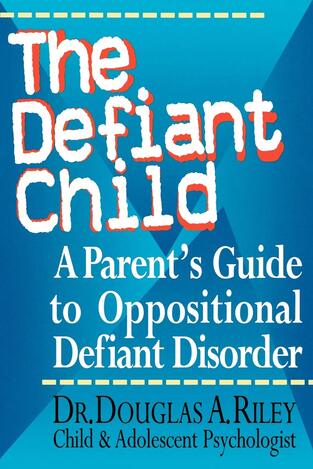
As children explore the world around them, nearly all will occasionally test boundaries and challenge authority. It's a natural part of their development! But some children and teenagers continually defy attempts to manage their behavior, seemingly rejecting authority altogether. Consistently disruptive at school and chronically in trouble at home, these children leave parents feeling frustrated and hopeless.
Dr. Douglas A. Riley offers parents much-needed insight into this clinical problem so they can better understand the turmoil in their families and resolve it. While this book explains how defiant children and teens think, its chief purpose is to provide parents with a step by step plan to regain peace and harmony in the family.
Dr. Douglas A. Riley offers parents much-needed insight into this clinical problem so they can better understand the turmoil in their families and resolve it. While this book explains how defiant children and teens think, its chief purpose is to provide parents with a step by step plan to regain peace and harmony in the family.

Childhood should be a happy, carefree time. Yet too many children are stressed-out and exhibiting symptoms of anxiety, from clinginess to frequent stomachaches, nightmares, and even refusing to go to school. All children have fears. Most parents don't know how to recognize when there is a real problem and how to deal with it when there is.
In Freeing Your Child from Anxiety, childhood anxiety expert Dr. Tamar Chansky examines all manifestations of childhood fears, including social anxiety, panic disorder, and obsessive compulsive disorder, as well as tic and hair-pulling, and shares a proven approach for helping children build emotional resilience for a happier and healthier life.
In Freeing Your Child from Anxiety, childhood anxiety expert Dr. Tamar Chansky examines all manifestations of childhood fears, including social anxiety, panic disorder, and obsessive compulsive disorder, as well as tic and hair-pulling, and shares a proven approach for helping children build emotional resilience for a happier and healthier life.

A highly sensitive child is one of the fifteen to twenty percent of children born with a nervous system that is highly aware and quick to react to everything. This makes them quick to grasp subtle changes, prefer to reflect deeply before acting, and generally behave conscientiously. They are also easily overwhelmed by high levels of stimulation, sudden changes, and the emotional distress of others. Because children are a blend of a number of temperament traits, some HSCs are fairly difficult–active, emotionally intense, demanding, and persistent–while others are calm, turned inward, and almost too easy to raise except when they are expected to join a group of children they do not know. But outspoken and fussy or reserved and obedient, all HSCs are sensitive to their emotional and physical environment.
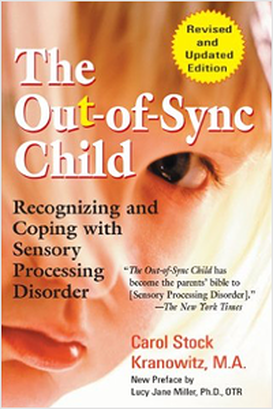
The book that introduced Sensory Processing Disorder (SPD) to parents, teachers, and other non-specialists. SPD is a common and frequently misdiagnosed problem in which the central nervous system misinterprets messages from the senses. This new edition features additional information on visual and hearing deficits, motor skill difficulties, ADHD, autism, Asperger syndrome, and other related disorders.

This companion book offers activities that parents and teachers of kids with Sensory Processing Disorder can do at home and school, along with updated information on which activities are most appropriate for children with coexisting conditions such as Asperger’s and autism

Where can parents turn when their child exhibits disturbing behavior and they want to avoid psychiatric labels and drugs? Pills Are Not for Preschoolers presents a much-needed alternative: child-focused family therapy—a brief, effective approach that involves family members in the child’s therapy. A family therapist for more than twenty years, Marilyn Wedge treats children’s problems not as biologically determined “disorders” but as responses to relationships in their lives that can be altered with the help of a therapist. Parents can now respond to symptoms of ADHD, depression, and anxiety with respectful family prescriptives, not prescriptions—and Wedge shows us how easy it can be to understand and implement her approach.
Girls

Unerringly nice, polite, modest, and selfless, the Good Girl is an identity so narrowly defined that it’s unachievable. When girls fail to live up to these empty expectations—experiencing conflicts with peers, making mistakes in the classroom or on the playing field—they become paralyzed by self-criticism, stunting the growth of vital skills and habits. Simmons traces the poisonous impact of Good Girl pressure on development and provides a strategy to reverse the tide. At once illuminating and prescriptive, The Curse of the Good Girl is an essential guide to contemporary girl culture and a call to arms from a new front in female empowerment.

When Odd Girl Out was first published, it became an instant bestseller and ignited a long-overdue conversation about the hidden culture of female bullying. Today, the dirty looks, taunting notes, jealousy and social exclusion that plague girls’ friendships have gained new momentum in cyberspace; we need fresh, innovative strategies to help our girls come through it all.
In this revised and updated edition, internationally recognized educator and bullying expert Rachel Simmons gives girls, parents and educators proven techniques for navigating social dynamics in person and online. Simmons offers new classroom initiatives and step-by-step suggestions for girls and their parents.
In this revised and updated edition, internationally recognized educator and bullying expert Rachel Simmons gives girls, parents and educators proven techniques for navigating social dynamics in person and online. Simmons offers new classroom initiatives and step-by-step suggestions for girls and their parents.

In her groundbreaking book, Queen Bees and Wannabes, Empower cofounder Rosalind Wiseman takes you inside the secret world of girls’ friendships. Wiseman has spent more than a decade listening to thousands of girls talk about the powerful role cliques play in shaping what they wear and say, how they respond to boys, and how they feel about themselves. In this candid, insightful book, she dissects each role in the clique: Queen Bees, Wannabes, Messengers, Bankers, Targets, Torn Bystanders, and more. She discusses girls’ power plays, from birthday invitations to cafeteria seating arrangements and illicit parties. She takes readers into “Girl World” to analyze teasing, gossip, and reputations; beauty and fashion; alcohol and drugs; boys and sex; and more, and how cliques play a role in every situation.
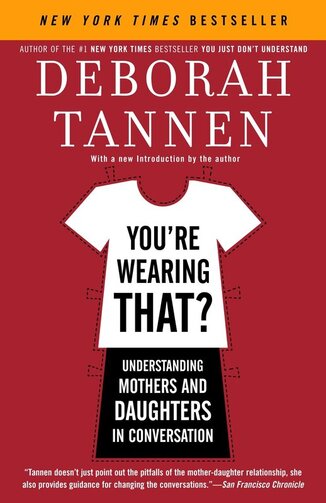
With groundbreaking insights, pitch-perfect dialogues, and deeply moving memories of her own mother, who passed away while she was writing this book, Tannen untangles the knots daughters and mothers can get tied up in. Readers will appreciate the humor as they see themselves on every page and come away with real hope for breaking down barriers and opening new lines of communication. Eye-opening and heartfelt, this book shows why these relationships are so fraught and what daughters and mothers can do to make their conversations—and their relationships—better.
Importance of play
|
Backed by the latest research, Play explains why play is essential to our social skills, adaptability, intelligence, creativity, ability to problem solve and more. Particularly in tough times, we need to play more than ever, as it’s the very means by which we prepare for the unexpected, search out new solutions, and remain optimistic. A fascinating blend of cutting-edge neuroscience, biology, psychology, social science, and inspiring human stories of the transformative power of play, this book proves why play just might be the most important work we can ever do.
|
Learning & Cognitive Development

In How We Learn, award-winning science reporter Benedict Carey sifts through decades of education research and landmark studies to uncover the truth about how our brains absorb and retain information. What he discovers is that, from the moment we are born, we are all learning quickly, efficiently, and automatically; but in our zeal to systematize the process we have ignored valuable, naturally enjoyable learning tools like forgetting, sleeping, and daydreaming. Is a dedicated desk in a quiet room really the best way to study? Can altering your routine improve your recall? Are there times when distraction is good? Is repetition necessary? Carey’s search for answers to these questions yields a wealth of strategies that make learning more a part of our everyday lives—and less of a chore.

The book shatters the conventional wisdom that brands our students as “underachievers,” “unmotivated,” or as suffering from “learning disabilities,” “attention deficit hyperactivity disorder,” or other “learning diseases.” Armstrong explains how these flawed labels often overlook students who are in possession of a distinctive combination of multiple intelligences, and demonstrates how to help them acquire knowledge and skills according to their sometimes extraordinary aptitudes.

Hailed as a classic in developmental psychology, The Learning Child is as relevant today as when it was first published in 1972, if not more so. Drawing on the findings of psychologists like Piaget, and on the author’s own experiences teaching child development at New York’s Bank Street College, Cohen explores the crucial links between learning and the successive stages of childhood, and shows parents and teachers how to turn a child’s natural instinct for inquiry into a talent for learning that will last a lifetime.

Some students are strong in certain areas and some are strong in others, but no one is equally capable in all. Yet most schools still cling to a one-size-fits-all education philosophy. As a result, many children struggle because their learning patterns don't fit the way they are being taught.
In his #1 New York Times bestseller A Mind at a Time, Dr. Levine shows parents and those who care for children how to identify these individual learning patterns, explaining how they can strengthen a child's abilities and either bypass or help overcome the child's weaknesses, producing positive results instead of repeated frustration and failure.
Consistent progress can result when we understand that not every child can do equally well in every type of learning and begin to pay more attention to individual learning patterns -- and individual minds -- so that we can maximize children's success and gratification in life. In A Mind at a Time Dr. Levine shows us how.
In his #1 New York Times bestseller A Mind at a Time, Dr. Levine shows parents and those who care for children how to identify these individual learning patterns, explaining how they can strengthen a child's abilities and either bypass or help overcome the child's weaknesses, producing positive results instead of repeated frustration and failure.
Consistent progress can result when we understand that not every child can do equally well in every type of learning and begin to pay more attention to individual learning patterns -- and individual minds -- so that we can maximize children's success and gratification in life. In A Mind at a Time Dr. Levine shows us how.
nutrition

Provides nutritional concepts and programs for the prevention of sickness and the maintenance of health during pregnancy and through the stages of growth from birth to sixteen years

From fast food and big organic to small farms and old-fashioned hunting and gathering, this young readers’ adaptation of Pollan’s famous food-chain exploration encourages kids to consider the personal and global health implications of their food choices.In a smart, compelling format with updated facts, plenty of photos, graphs, and visuals, as well as a new afterword and backmatter, The Omnivore’s Dilemma serves up a bold message to the generation that needs it most: It’s time to take charge of our national eating habits—and it starts with you.
parenting

Expanding on her poem, Dorothy Law Nolte offers a simple but powerful guide to parenting by inspiring values through example. This book will help parents find their own parenting wisdom and draw out their child's immense inner resources.

Drawing on research, on conversations with admissions officers, educators, and employers, and on her own insights as a mother and as a student dean, Julie highlights the ways in which overparenting harms children, their stressed-out parents, and society at large.
While empathizing with the parental hopes and, especially, fears that lead to overhelping, Julie offers practical strategies that underline the importance of allowing children to make their own mistakes and develop the resilience, resourcefulness, and inner determination necessary for success.
While empathizing with the parental hopes and, especially, fears that lead to overhelping, Julie offers practical strategies that underline the importance of allowing children to make their own mistakes and develop the resilience, resourcefulness, and inner determination necessary for success.
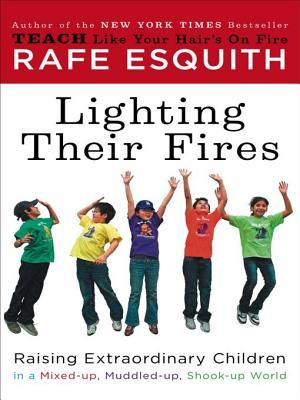
In Lighting Their Fires, Esquith shows that children aren't born extraordinary; they become that way as a result of parents and teachers who instill values that serve them not just in school, but for the rest of their lives. Framed by a class trip to a major league baseball game, Lighting Their Fires moves inning by inning through concepts that help children build character and develop enriching lives. Whether he is highlighting the importance of time management or offering a step-by-step discussion of how children can become good decision makers, Esquith shows how parents can equip their kids with all the tools they need to find success and have fun in the process. Using examples from classic films and great books, he stresses the value of sacrifice, the importance of staying true to oneself, and the danger that television can pose to growing young minds.

New parents are faced with innumerable decisions to make regarding the best way to care for their baby, and, naturally, they often turn for guidance to friends and family members who have already raised children. But as scientists are discovering, much of the trusted advice that has been passed down through generations needs to be carefully reexamined.
A thought-provoking combination of practical parenting information and scientific analysis, Our Babies, Ourselves is the first book to explore why we raise our children the way we do--and to suggest that we reconsider our culture's traditional views on parenting.
In this ground-breaking book, anthropologist Meredith Small reveals her remarkable findings in the new science of ethnopediatrics. Professor Small joins pediatricians, child-development researchers, and anthropologists across the country who are studying to what extent the way we parent our infants is based on biological needs and to what extent it is based on culture--and how sometimes what is culturally dictated may not be what's best for babies.
A thought-provoking combination of practical parenting information and scientific analysis, Our Babies, Ourselves is the first book to explore why we raise our children the way we do--and to suggest that we reconsider our culture's traditional views on parenting.
In this ground-breaking book, anthropologist Meredith Small reveals her remarkable findings in the new science of ethnopediatrics. Professor Small joins pediatricians, child-development researchers, and anthropologists across the country who are studying to what extent the way we parent our infants is based on biological needs and to what extent it is based on culture--and how sometimes what is culturally dictated may not be what's best for babies.

All parents would agree that adequate preparation for life requires a sense of responsibility. Commonly, it is felt that one must "teach" responsibility. Punishment, rewards, and bribes are the tools of the teaching process. These methods are generally unsuccessful. An adult cannot "teach" responsibility, it must be given to the child for them to learn how to handle.

This helpful book presents families with quotations and scenarios from real suffering parents (who are not identified), practical advice, and tested strategies for coping. It also discusses the fact that parents of adult children may themselves need therapy and medications, especially antidepressants. The book is written in a clear, reassuring manner by Dr. Joel L. Young, medical director of the Rochester Center for Behavioral Medicine in Rochester Hills, Michigan; with noted medical writer Christine Adamec, author of many books in the field.
School
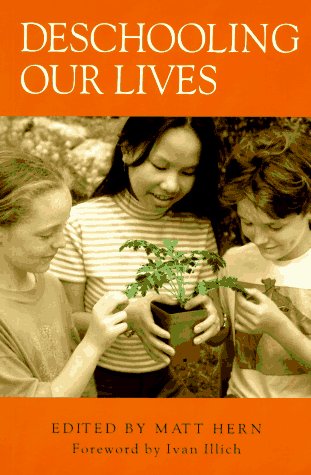
This book challenges common assumptions about the nature of education and the need for formal schooling and provides an overview of promising alternatives to compulsory education. Following a foreword by Ivan Illich, four sections cover the philosophical roots of opposition to compulsory public education, current analyses of the public school environment and the ways it discourages thought and intellectual development, perspectives on homeschooling, and descriptions of alternative schools.
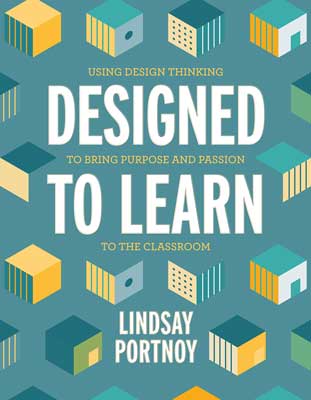
Students become attentive, curious, and passionate about learning when they can see its relevance to their lives and when they're empowered to use that learning to solve problems that matter. Regardless of the subject or grade level, instruction can be infused with the meaning students crave by implementing design thinking. Design thinking prompts students to consider: "I've learned it. Now what am I going to do with it?"
In Designed to Learn, cognitive scientist and educator Lindsay Portnoy shares the amazing teaching and learning that take place in design thinking classrooms. She provides easy-to-implement strategies, classroom examples, and clear tools to scaffold the processes of inquiry, discovery, design, and reflection.
In Designed to Learn, cognitive scientist and educator Lindsay Portnoy shares the amazing teaching and learning that take place in design thinking classrooms. She provides easy-to-implement strategies, classroom examples, and clear tools to scaffold the processes of inquiry, discovery, design, and reflection.

Arguing that the burden of homework causes significant family stress--including parent-child conflict, reduced family leisure time, and overly tired children--this book questions whether the benefits of homework are worth its costs. The book examines the historical progression of homework and the influence of international competition on the trend toward increasing homework assignments. While there is little evidence that excessive homework sharpens skills or leads to a competitive edge in the global market place, the book notes evidence that homework does broaden class divides, as children in families with fewer resources struggle to keep up. The book concludes by offering simple strategies for parents to "trust their instincts" and work to reduce the demands of homework.

Joy in the Classroom offers examples drawn from real life experiences that can be duplicated through the simple methods presented by the author. The age-old techniques have been successfully adapted for children to bring out their fullest hidden potential.

An educational reformer, teacher and veteran school principal, Meier has led the movement to restructure large high schools into small, vibrant educational enclaves--schools within a school, housed within the same building. In a visionary, hopeful blueprint for revitalizing America's public schools, she first discusses her work as co-principal of Central Park East, an alternative public secondary school in East Harlem, New York, which she founded in 1974. Its students, mostly black and Hispanic, come from low-income families; 90% of them graduate high school, and 90% of those go on to college. Meier advocates small classes that encourage independent, critical thinking by using real-world exercises. Her blueprint for reform calls for enclave schools with autonomy over teaching; parents' right to choose the schools their children will attend; and student participation in socially useful, school-directed work experiences.
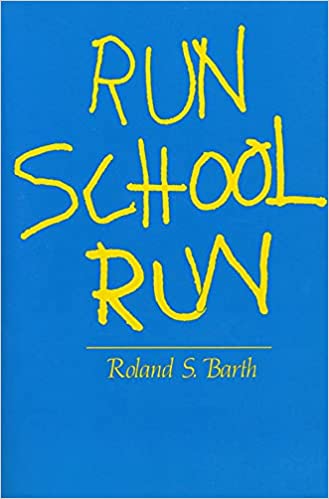
Roland Barth believes that there is a way to create a school which, instead of insisting upon uniformity, builds upon diversity among students, teachers, and teaching styles. Unlike many educational theorists, Barth has had ample opportunity to test his beliefs during his many years as an elementary school principal.
Run School Run is the chronicle of his theory in action, a nuts-and-bolts study of one school’s rocky but ultimately quite successful transition toward pluralist education.For Barth, the case against an elementary education that is uniform in content and method is clear-cut: teacher abilities differ radically, and so do student needs. In the pluralist school, the problem is to find ways to put this variety to good use. Barth shows that the solution is essentially a matter of organization; he sets up a principal’s blueprint that offers teachers more control over curriculum content, teaching materials and methods, and composition of classes, in a way that ensures an educational coherence for each student.
Run School Run is a rich, readable account, a how-to book as well as a personal reminiscence on the initiation and administration of an environment in which teaching and learning are allowed to take on shapes of their own design.
Run School Run is the chronicle of his theory in action, a nuts-and-bolts study of one school’s rocky but ultimately quite successful transition toward pluralist education.For Barth, the case against an elementary education that is uniform in content and method is clear-cut: teacher abilities differ radically, and so do student needs. In the pluralist school, the problem is to find ways to put this variety to good use. Barth shows that the solution is essentially a matter of organization; he sets up a principal’s blueprint that offers teachers more control over curriculum content, teaching materials and methods, and composition of classes, in a way that ensures an educational coherence for each student.
Run School Run is a rich, readable account, a how-to book as well as a personal reminiscence on the initiation and administration of an environment in which teaching and learning are allowed to take on shapes of their own design.

This book presents a theoretical framework that weaves together three threads: (1) the importance of play in the social, psychological, and intellectual development of children; (2) the human need for personal power and the gratification that challenge in active learning experiences brings to one's feelings of self-worth; and (3) the imperative of respect for children--respect for them and for their choices. The position is taken that when certain conditions exist in a classroom, children become empowered by increasing their sense of self-worth, self-respect, and intellectual competence. Outlining teaching strategies and curriculum practices that enable children to develop a "can-do" spirit, the book offers a model for structuring the early childhood classroom built on an approach to teaching for thinking called "play-debriefing-replay."

Innovative approaches to the learning styles of students, school-based management which empowers teachers, and decentralization of school boards are among the transforming elements that Fiske observed in a country-wide tour of redesigned public school systems. While citing outstanding prototype systems--among them those of Miami, New York City's Community School District 4, and New Haven, Conn.,--Fiske emphasizes that the educational turnabout is in its early stages. His ``journey through the quiet revolution that is slowly transforming American education'' offers hope with its pragmatic analysis.

Far too often, our students attain only a superficial level of knowledge that fails to prepare them for deeper challenges in school and beyond. In Teaching for Deeper Learning, renowned educators and best-selling authors Jay McTighe and Harvey F. Silver propose a solution: teaching students to make meaning for themselves.
If our goal is to prepare students to meet the rigorous demands of school, college, and career, then we must foster their ability to respond to such challenges. This comprehensive, practical guide will enable teachers to engage students in the kind of learning that yields enduring understanding and valuable skills that they can use throughout their lives.
If our goal is to prepare students to meet the rigorous demands of school, college, and career, then we must foster their ability to respond to such challenges. This comprehensive, practical guide will enable teachers to engage students in the kind of learning that yields enduring understanding and valuable skills that they can use throughout their lives.

Teachers support cognitive development through meaningful classroom conversations. This book examines adult communication and its influence on children’s behavior and learning. Transforming the language used in the classroom supports language learning, connecting words to actions, and developing clear communication practices.

Your Students, My Students, Our Students explores the hard truths of current special education practice and outlines five essential disruptions to the status quo. To realize authentic and equitable inclusion, we must relentlessly and collectively pursue change. This book—written not for "special educators" or "general educators" but for all educators—addresses the challenges, maps out the solutions, and provides tools and inspiration for the work ahead. Real-life examples of empowerment and success illustrate just what's possible when educators commit to the belief that every student belongs to all of us and all students deserve learning experiences that will equip them to live full and rewarding lives.
Temperament & personality

Discover your child's primary language—then speak it—and you will be well on your way to a stronger relationship with your flourishing child. Each child, like an adult, expresses and receives love best through on of five different communication styles. This can work against parents who speak different love languages that their children. however, when properly prepared, adults can use this information to help them meet their children's deepest emotional needs.

Passionately argued, impressively researched, and filled with indelible stories of real people, Quiet shows how dramatically we undervalue introverts, and how much we lose in doing so. Taking the reader on a journey from Dale Carnegie’s birthplace to Harvard Business School, from a Tony Robbins seminar to an evangelical megachurch, Susan Cain charts the rise of the Extrovert Ideal in the twentieth century and explores its far-reaching effects. The author draws on cutting-edge research in psychology and neuroscience to reveal the surprising differences between extroverts and introverts. She offers invaluable advice on everything from how to better negotiate differences in introvert-extrovert relationships to how to empower an introverted child to when it makes sense to be a “pretend extrovert.” This extraordinary book has the power to permanently change how we see introverts and, equally important, how introverts see themselves.
ADult Psychology

The Art of Possibility is the dynamic product of an extraordinary partnership. An international bestseller, the book combines Benjamin Zander’s experience as conductor of the Boston Philharmonic and his talent as a teacher and communicator with psychotherapist Rosamund Stone Zander’s genius for designing innovative paradigms for personal and professional fulfillment. The authors’ harmoniously interwoven perspectives provide a deep sense of the powerful role that the notion of possibility can play in every aspect of life. Through uplifting stories, parables, and personal anecdotes, the Zanders invite us to become passionate communicators, leaders, and performers whose lives radiate Possibility into the world.

Most people believe that the best way to motivate is with rewards like money—the carrot-and-stick approach. That’s a mistake, says Daniel H. Pink . In this book, he asserts that the secret to high performance and satisfaction-at work, at school, and at home—is the deeply human need to direct our own lives, to learn and create new things, and to do better by ourselves and our world.
Drawing on four decades of scientific research on human motivation, Pink exposes the mismatch between what science knows and what business does—and how that affects every aspect of life. He examines the three elements of true motivation—autonomy, mastery, and purpose-and offers smart and surprising techniques for putting these into action in a unique book that will change how we think and transform how we live.
Drawing on four decades of scientific research on human motivation, Pink exposes the mismatch between what science knows and what business does—and how that affects every aspect of life. He examines the three elements of true motivation—autonomy, mastery, and purpose-and offers smart and surprising techniques for putting these into action in a unique book that will change how we think and transform how we live.

In times of crisis and upheaval, our responses to stress become especially important. We have long heard about the "fight or flight" response, but renowned psychologist Shelley E. Taylor points out that hardwired in females -- both humans and those of other species -- is an instinct that can transcend "fight or flight." Their "tend and befriend" response is not only demonstrable but, as Taylor deftly explains in this eye-opening work, a key ingredient in human social life.
With great skill and insight, Taylor examines stress, relationships, and human society through the special lens of women's biology. She draws on genetics, evolutionary psychology, physiology, and neuroscience to show how this tending process begins virtually at the moment of conception and literally crafts the biology of offspring through genes that rely on caregiving for their expression. Taylor also examines what drives women to seek each other's company, and to tend to the young and the infirm -- acts that greatly benefit the group but often at great cost to the individual.
With great skill and insight, Taylor examines stress, relationships, and human society through the special lens of women's biology. She draws on genetics, evolutionary psychology, physiology, and neuroscience to show how this tending process begins virtually at the moment of conception and literally crafts the biology of offspring through genes that rely on caregiving for their expression. Taylor also examines what drives women to seek each other's company, and to tend to the young and the infirm -- acts that greatly benefit the group but often at great cost to the individual.
|
3855 Happy Valley Rd. Lafayette, CA 94549
Lic. #073401984 Tax ID: 68-0430189 Hours of Operation: Monday - Friday 7:30 A.M. - 6:00 P.M. Phone: (925) 283-7100 | Fax: (925) 283-7104 Email: [email protected] Our space is a nut-free facility |
Children Growing Together
|






